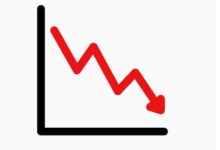No consensus reached, next GST Council meet on December 11-12

The fifth Goods and Sales Tax+ (GST) Council meeting on Saturday turned out to be inconclusive, as the impasse over the issue of assessee jurisdiction continued.
Union Finance Minister Arun Jaitley, who heads the Council, today said it would meet again on December 11 and 12 to hammer out differences on which assessees will come under states’ jurisdiction, and which ones will come under the Centre’s.
The Council is also yet to approve the drafts of supporting legislations such as the Central GST and State GST, Integrated GST, and a law detailing compensation to states for loss of revenue in the first five years of the roll-out.
“Are we close to a resolution? I’ll keep my fingers crossed,” said Jaitley when asked whether the Council would be able to reach a consensus on key issues to enable the country to implement the new tax regime from April 1.
“I hope during the next meeting on November 11-12, there is a positive movement as far as laws are concerned. But on the critical issue of cross-empowerment, two to three suggestions have come,” he added.
The issue of dual control has been pending since the second GST Council meeting. The slugfest between Centre and states is about who will control the taxpayer base of VAT, excise and service tax and in what measure after the rollout of the proposed indirect tax regime. The resolution of the issue of dual control will be crucial for the targeted rollout of the indirect tax regime by April 1, 2017.
The GST Council was earlier discussing five proposals for dual control but in its meeting on November 4 had arrived at an option of two proposals — horizontal division and vertical division.
States are favouring a horizontal division of tax assessees, while Centre prefers to have a vertical split. In vertical division, the possible division of taxpayers could be 50:50 or 40:60 or a mirror image approach in which if 60 per cent of taxpayers below Rs 1.5 crore mark were allocated to states, then 60 per cent of taxpayers above the threshold would be allocated to the Centre. It has been proposed that the arrangement could be switched every three years.
In the horizontal division, taxpayers below Rs 1.5 crore turnover should be administered only by states and those above Rs 1.5 crore should be administered by the Centre and the states with cross empowerment. The biggest disadvantage of such an option is that it will be highly skewed as 93 per cent of the service taxpayers and 85 per cent of VAT assessees have turnover below Rs 1.5 crore.









